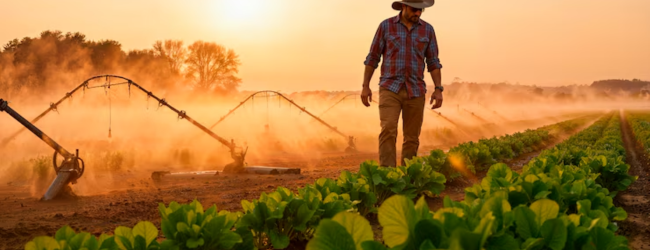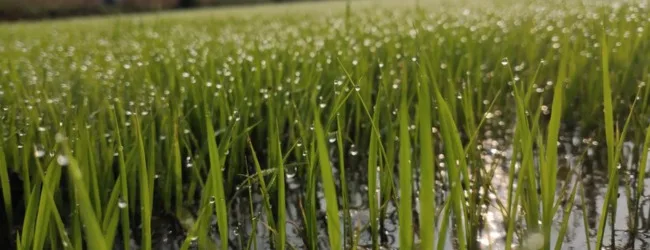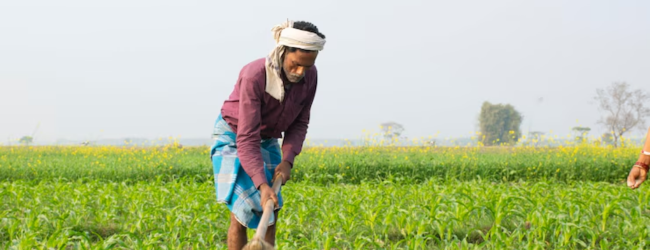Table of contents
In many parts of the world, particularly in densely populated regions, farmers face the challenge of producing enough food from limited land. This has led to the development of intensive subsistence farming, a system characterized by high labor inputs and a focus on maximizing yields from small plots. This blog will explore the meaning, characteristics, and significance of this vital agricultural practice.
What is Intensive Subsistence Farming?

Intensive subsistence farming is an agricultural system where farmers cultivate small plots of land using a large amount of human and animal labor to produce enough food for their own consumption. The primary goal is survival and self-sufficiency, rather than producing a surplus for sale. This system is prevalent in areas with high population density and limited arable land, such as parts of Asia.
Key Characteristics of Intensive Subsistence Farming
- Small Land Holdings: Farmers typically cultivate very small plots of land, often just a few acres or even less.
- High Labor Input: Intensive subsistence farming relies heavily on manual labor and animal power. Farmers invest significant time and effort in tilling, planting, weeding, and harvesting.
- High Yields per Unit Area: Despite the small land size, this system aims to maximize yields through careful cultivation practices.
- Use of Manure and Fertilizers: To maintain soil fertility, farmers often use animal manure and, where available, chemical fertilizers.
- Crop Rotation: Rotating different crops helps to replenish soil nutrients and prevent depletion.
- Simple Tools and Techniques: Farmers generally use simple tools and traditional farming methods.
- Focus on Food Crops: The primary focus is on growing food crops for the farmer’s family, with little or no surplus for sale.
- Dependence on Monsoon Rains: In many regions, particularly in Asia, intensive subsistence farming is heavily dependent on monsoon rains for irrigation.
Types of Intensive Subsistence Farming:
1. Intensive Subsistence Farming Dominated by Wet Paddy Cultivation

- Geographical Focus: This type of farming is most prominently practiced in the monsoon regions of Asia. This includes countries and areas with high rainfall and suitable temperatures for rice cultivation, such as:
- South Asia (e.g., parts of India, Bangladesh)
- Southeast Asia (e.g., Vietnam, Thailand, Indonesia, Philippines)
- East Asia (e.g., China, Japan, Korea)
- Key Crop: The cultivation of rice (paddy) in flooded fields is the defining characteristic. Rice thrives in standing water, which helps to suppress weeds and provides essential nutrients.
- Land Holdings: Farm sizes are typically very small and often fragmented due to high population density and inheritance patterns. Fields are often separated by narrow, hand-made ridges (bunds or levees) that farmers use as footpaths. These bunds are kept narrow to maximize the cultivable area.
- Labor Intensity: This method is extremely labor-intensive. The entire process, from preparing the paddy fields (often involving flooding and puddling), transplanting seedlings (usually done manually in rows), weeding, irrigating, harvesting (traditionally by hand), and threshing, requires significant human effort. Animal power (buffaloes, oxen) is often used for plowing.
- Water Management: Efficient water management is crucial. Farmers rely heavily on monsoon rains, but often supplement this with traditional irrigation systems like canals and tanks. The terracing of land in hilly areas is common to retain water and create level fields for paddy cultivation.
- Cropping Patterns: In regions with favorable climates and sufficient water, double-cropping (growing two crops of rice in a year) or even triple-cropping is practiced to maximize output from the limited land. In areas where only one rice crop is possible due to shorter monsoons or cooler temperatures, the fields might be used to grow other food or cash crops like oats, pulses, tobacco, oilseeds, and vegetables during the dry season.
- Manure and Fertilizers: To maintain the fertility of the continuously cultivated land, farmers heavily rely on various types of manure, including farm waste, animal dung, and sometimes even human excreta. Green manuring (plowing under nitrogen-fixing plants) and the use of chemical fertilizers (where accessible and affordable) are also employed to enhance productivity.
- Animal Husbandry: In wet paddy dominated areas, the focus is primarily on crop cultivation, especially rice and vegetables. The rearing of livestock like sheep, goats, and horses is comparatively less significant. However, buffaloes are commonly kept as draught animals for plowing.
ALSO READ | How to Start Step Farming Business in India? A Complete Guide
2. Intensive Subsistence Farming Dominated by Crops Other Than Paddy

- Geographical Focus: This type of intensive subsistence agriculture is practiced in regions where the climate, soil conditions, or topography are not conducive to wet paddy cultivation. Examples include:
- North China, Manchuria, North Korea (wheat, soybeans, barley)
- Parts of India (Punjab, Haryana, western Uttar Pradesh – wheat, maize, millets, pulses, oilseeds)
- Drier parts of Southeast Asia and peninsular India (millets, maize, pulses)
- Key Crops: The dominant crops vary depending on the local climate and soil. These are typically staple food crops that can be grown intensively, such as wheat, maize, millets (sorghum, pearl millet, finger millet), pulses (various beans and lentils), soybeans, tubers (potatoes, sweet potatoes), and vegetables.
- Land Holdings and Labor: Similar to wet paddy cultivation, land holdings are generally small and fragmented, and the system relies heavily on manual labor and animal power for various farming operations.
- Irrigation: Irrigation plays a crucial role in these regions, especially where rainfall is insufficient or unevenly distributed. Traditional irrigation methods like wells, canals, and tanks are common, and modern irrigation techniques might be adopted where feasible.
- Cropping Patterns: Farmers often practice crop rotation and intercropping (growing two or more crops simultaneously on the same field) to maximize land use and soil fertility. Multiple cropping within a year is also attempted where the growing season allows.
- Manure and Fertilizers: Similar to wet paddy farming, the use of organic manure is essential for maintaining soil health under intensive cultivation. Chemical fertilizers might also be used depending on availability and affordability.
- Animal Husbandry: While crop cultivation remains the primary focus, livestock rearing might be more significant in these regions compared to wet paddy areas, depending on the specific crops grown and the local agricultural practices. Animals can provide manure, draught power, and sometimes supplementary food or income.
💡Pro Tip: If you want to start a business but have too many doubts, connect with a business expert from Boss Wallah for guidance – https://bw1.in/1116
Significance of Intensive Subsistence Farming
- Food Security: It provides a crucial source of food for a large portion of the world’s population, particularly in densely populated regions.
- Employment: It supports a significant number of people, providing livelihoods for farmers and agricultural laborers.
- Cultural Importance: In many regions, intensive subsistence farming is deeply intertwined with local cultures and traditions.
Challenges of Intensive Subsistence Farming
- Dependence on Monsoon: Reliance on unpredictable monsoon rains makes this system vulnerable to droughts and floods.
- Limited Technology: The use of simple tools and techniques can limit productivity.
- Land Degradation: Intensive cultivation can lead to soil erosion and nutrient depletion if not managed properly.
- Poverty: Farmers often struggle with poverty due to small land holdings and limited access to markets.
Need Expert Guidance?
Starting a business can be challenging, but you don’t have to do it alone! At Boss Wallah, our 2,000+ business experts are ready to provide valuable insights and guidance. Whether you need help with marketing, finance, sourcing, or any other area of any business, our business experts are here to help you succeed- https://bw1.in/1116
Confused about Which Business to Start?
Want to start your own business but unsure which one to choose? Explore Boss Wallah, where you’ll find 500+ courses by successful business owners, featuring practical, step-by-step guides on starting and growing various businesses. Find your perfect business idea today – https://bw1.in/1111
Conclusion
Intensive subsistence farming is a vital agricultural system that sustains a large part of the world’s population. While it faces challenges related to climate, technology, and land degradation, it remains a crucial source of food security and livelihood in many regions. Sustainable practices and access to improved technologies are essential for enhancing the productivity and resilience of this system.
FAQs
- What is the main goal of intensive subsistence farming?
- To produce enough food for the farmer’s family and their immediate needs.
- Where is intensive subsistence farming most common?
- In densely populated regions with limited arable land, particularly in Asia.
- What are the main inputs in intensive subsistence farming?
- High labor input, both human and animal.
- What are the typical crops grown in this system?
- Rice, wheat, maize, pulses, and vegetables are common.
- How does intensive subsistence farming differ from commercial farming?
- Intensive subsistence farming focuses on self-sufficiency, while commercial farming aims to produce a surplus for sale.
- What are the main challenges faced by intensive subsistence farmers?
- Dependence on monsoon rains, limited technology, and land degradation.
- What is wet paddy cultivation?
- The cultivation of rice in flooded fields, a common practice in intensive subsistence farming in monsoon regions.
- How can the productivity of intensive subsistence farming be improved?
- Through the use of improved seeds, fertilizers, irrigation techniques, and sustainable farming practices.


